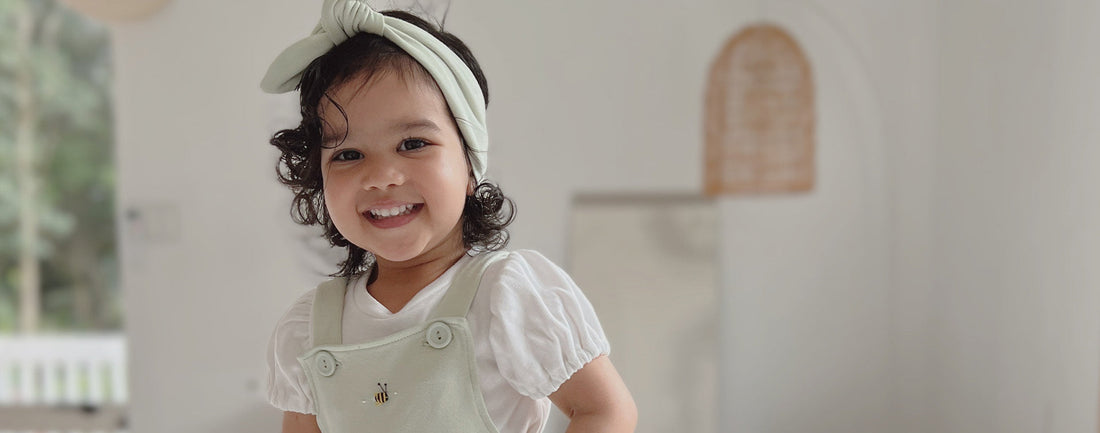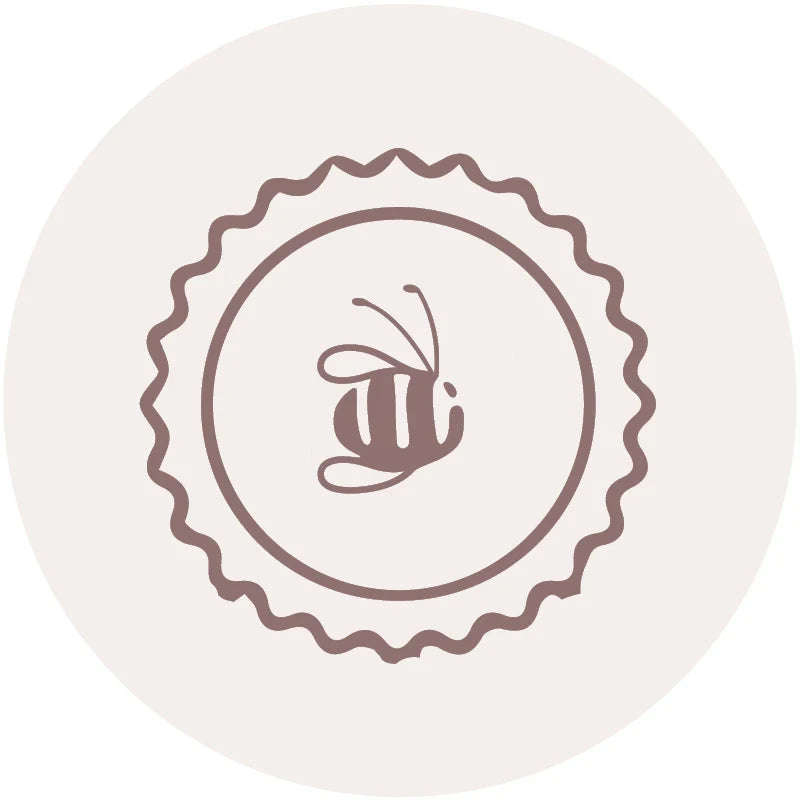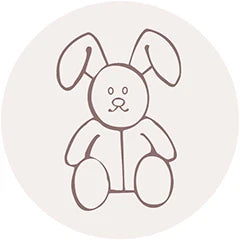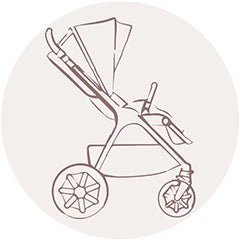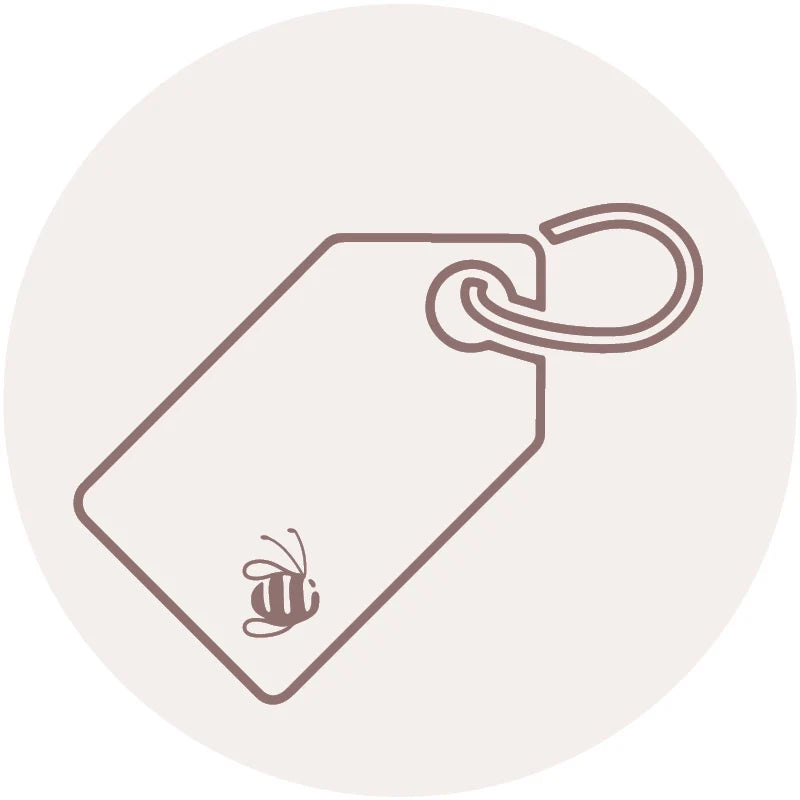Snuzpod 5 Mattress Protector
Snuzpod 5 Mattress Protector
SKU:BD022A
In stock
Couldn't load pickup availability
Overview
Overview
When it comes to nighttime accidents, we've got you covered. Luxury cotton covers a waterproof layer crafted from a certified waterproof membrane.
The cotton absorbs any accidents, keeping your baby clean and dry for a comfortable night's sleep.
Super soft and absorbent brushed cotton
100% waterproof
Provides a barrier against dust mites
Oeko-Tex Class 1 certified materials
Machine washable at 40 degrees
Size: 75.5 x 40cm
Materials: Outer: 100% Cotton; Inner: 100% Polyurethane Membrane
Fits the all-new SnüzPod5
What's Included
What's Included
Delivery and Returns
Delivery and Returns
- Delivery: Free within NZ on orders over $100 (excluding bulky items) or $8 standard shipping
- Returns: Accepted within 14 days of receipt with proof of purchase
- Some items are excluded from returns including sale items, hardware, car seats, prams, monitors and personal items - please click here for the full list.
Share this product
Recently Viewed Products
Related Blogs
Sleep Solutions - Swaddles and Wraps
Which swaddle or wrap is best for your baby? Choose well for better sleep Swaddling your newborn helps calm, relax and settle your baby, ready to sleep. A swaddled newborn will generally fall asleep more easily and sleep for longer. This is because newborns are still used to the warm, tight feel of the womb. Newborns also have a startle reflex – really big twitches of the hands and arms that can wake your baby. Swaddling gently snuggles your baby’s arms in to keep them snoozing peacefully. Choosing the right swaddle or wrap depends on your baby’s preferences and the time of year. Some swaddles may be one-size-fits-all, designed to use from newborn through to infant sleeping bag. Others fit a specific size, and you’ll need to change the size as your baby grows. For these wraps, it’s much safer to get one that fits your child now – not one that they’ll grow into. The extra fabric can get in the way of your child’s movement, and may also increase the risk of SIDS. Follow our guide to understand what’s right for your newborn. Which wrap is right for you? There are two main types of wraps: fitted wraps, and traditional swaddles. The right one will depend on your preferences, and what works best for your baby. Fitted wraps Fitted wraps make swaddling a newborn easier. They’re also more secure – very important if your baby is a wriggler! Dimples has two types of fitted wraps: Snuggle Wrap : The Dimples Snugglewrap is perfect for a newborn who loves to be cocooned with arms down. Its unique design means it can be used safely in the crib, pushchair or car seat, for babies up to six months old. The Snuggle Wrap comes in one size and will adapt to your baby as it grows. Sleep Pod : The Sleep Pod is designed for babies who prefer to sleep with their arms up, or those who like self-soothing by sucking on a hand or fist while sleeping. It allows for natural movement of the hips and arms, while still making your baby feel snug and comforted. This Sleep Pod comes in two sizes: newborn and small (3 – 6 months). It has a zip up the front that makes it super easy to put on. There’s also easy access via the double-ended zip for nighttime nappy changes. Traditional wraps Traditional wraps are large pieces of stretchy fabric. They are more versatile than fitted wraps, as they can also be used as shade cloth, feeding cover or blanket. They also grow with your baby, so you don’t need to buy more than one. However, they are more difficult to use – learning to swaddle takes time, and it can be difficult to get the perfect fit, especially on a wriggly baby at 2 am. Dimples have Extra-large wraps, in both merino and organic cotton . Cotton or merino? Both cotton and merino fabrics are suitable for sleeping swaddles. Both are breathable, helping babies to regulate their temperature. Synthetic fabrics can lead to your baby overheating and sweating. Merino wool can help naturally regulate your baby’s temperature, providing even warmth and wicking moisture away. This makes an excellent option year-round. During the hottest months you may prefer a cotton wrap. This can also be used in cooler weather over close-fitting wool pajamas. The perfect wrap, better sleep Finding the perfect wrap can make all the difference in those tricky early months. This may take some trial and error, as you learn about what works for you and your baby. If you’re confident using a traditional wrap, this will give you the most versatility. If you’re a relatively newcomer to swaddling, a fitted wrap might suit you better. If your baby will arrive in the heat of summer, make sure you have a few cotton options on hand. For other times of the year, merino will work well. Whatever you choose, nailing that perfectly wrapped baby burrito will make for an especially wonderful parenting moment – especially if your baby is asleep!
Learn moreDimples Cotton- High Quality Designed to Last
Dimples Cotton: Naturally Better for Summer As the weather warms up, it's the perfect time to refresh your little one’s wardrobe with breathable, natural fabrics. At Dimples, we’re passionate about creating clothing that not only looks beautiful but feels good and does good too — for your baby and the planet. Our cotton is soft, strong, and certified to the highest global standards. The yarn carries GOTS (Global Organic Textile Standard) certification, and our dyeing process is certified by OEKO-TEX®, ensuring it's free from harmful substances and gentle on sensitive skin. Why Choose Cotton? Cotton is a natural fibre that’s ideal for dressing babies during warmer months. It’s breathable, absorbent, and lightweight — helping to keep your little one cool, dry, and comfortable as temperatures rise. Unlike synthetic fabrics that can trap moisture and cause overheating or irritation, cotton allows air to flow and helps prevent heat rashes by drawing moisture away from the skin. In fact, cotton can absorb up to 20% of its weight in moisture before it even starts to feel damp. At Dimples, we use only high-quality cotton that's soft enough for delicate skin but durable enough to be worn, washed, and passed down to the next little one. Caring for Your Dimples Cotton Dimples cotton is designed to be lived in — and washed often. There’s no need for special treatment here. Simply pop it in the washing machine with your everyday laundry. It’s made to last and look good doing it. Timeless Quality Inspired by the joy of childhood and the beauty of everyday moments. You’ll find a variety of silhouettes, from newborn essentials to stylish toddler pieces, all made in our signature soft cotton and designed to mix, match, and move with your little one. Our garments are made with care, built to last, and designed with timelessness in mind — so they can be loved now, and lovingly handed down later. Shop the full range Here
Learn moreIntroducing a bedtime routine with your baby
The Power of a Bedtime Routine for Your BabySimple rhythms that lead to better sleep - for both of you In the early weeks with a newborn, life tends to move to a rhythm all on its own. Feeds, naps, cuddles, and nappy changes often blur into one another, and any sense of routine can feel a little out of reach. That’s completely normal! As your baby grows, you’ll notice more predictable patterns beginning to emerge. This is the perfect time to gently introduce a bedtime routine – a simple series of calming steps that helps your baby unwind and gives you both a peaceful finish to the day. Why bedtime routines matter Babies thrive on repetition. A consistent series of calming activities each evening helps regulate their body clock, encourages longer stretches of sleep, and creates a comforting rhythm to the day. Routines don’t just benefit sleep - they also nurture connection, ease overstimulation, and make bedtime feel less like a battle and more like a shared moment of calm. These rituals will evolve as your baby grows, but the sense of structure and predictability will continue to support their development well into childhood. When to begin You can begin easing into a bedtime routine from around six to eight weeks old - once your baby begins to show more consistent sleep and feeding patterns. This is also when they start to recognise daily cues, making it the perfect time to introduce a gentle ritual that helps them wind down. How to get started There’s no “perfect” routine - what works for one family might not suit another. The key is consistency, calmness, and keeping things relatively short (20 to 30 minutes is ideal). Try to carry out most of the routine in your baby’s room so they start to associate the space with sleep. Here’s a sample rhythm to get you started: Bath - A warm bath helps wash away the day and begins the wind-down process. This can also be a fun and playful moment, especially if older siblings are involved. Massage - After bath time, a quick massage with something like Scullys Baby Massage Oil can help your baby get ready for rest. This is a wonderful way to connect with your baby through touch, as well as being very relaxing for both of you. Sleepwear - Soft, breathable pyjamas or a sleeping gown signal that bedtime is near. You might like to use Merino to help regulate temperature throughout the night. We have a gorgeous range of safe and cosy sleepwear available here. Feeding - Try offering the final feed early in the routine rather than just before sleep. This can help reduce reliance on feeding to fall asleep. Story or song - A simple board book, soft lullaby, or even humming a tune gives your baby a consistent cue that bedtime is here. It also builds language skills and creates special bonding moments. Cuddles - A warm snuggle and quiet kiss goodnight helps your baby feel safe, even if you’ll likely see them again overnight. Watch for sleepy cues Rather than watching the clock, keep an eye on your baby. Rubbing eyes, zoning out, yawning, or fussing can all signal tiredness. Aim to start the bedtime routine before they become overtired. For most babies, somewhere between 6:30 and 7:30 pm works well, and this timing can continue into the early school years. Keep the environment sleep-friendly A dark, quiet space tells your baby’s brain that it’s time to sleep. Avoid bright lights, noisy toys, or too much stimulation. Night lights can be helpful for feeding and changes, but aren’t necessary for sleep - babies aren’t born afraid of the dark. You could add a soft and practical sleep sound machine, like a Yogasleep Nod to make night-time care easier with it's built in night light. Put baby to bed drowsy, not asleep As you get to know your baby’s cues, try placing them into bed when they’re sleepy but still awake. This helps them learn to settle themselves, which can make overnight waking easier to manage. It also reduces the shock of waking up in a different spot from where they fell asleep. Be consistent - but stay flexible Consistency is key, but so is flexibility. There’ll be times when travel, illness, or overtired evenings throw things off. The idea is to have a calming, repeatable routine you can come back to, wherever you are. If more than one caregiver can do bedtime, that helps too - it builds flexibility and avoids babies becoming dependent on one specific parent for settling. Small rituals with lasting benefits Your baby’s routine doesn’t need to be perfect, and it will change over time. But these small, daily rhythms bring more than just sleep - they offer connection, confidence, and a peaceful way to end the day together. One day, your baby will be reading their own book at bedtime. But your cuddle and goodnight kiss? That will still matter, even if you have to sneak it in after lights out ❤️
Learn moreHow to make a cute, cosy and safe baby bed
Here’s what you really need to know about safe sleep It’s easy to get caught up in the dreamy images of babies curled up in plush bedding, surrounded by teddies and soft textures. But when it comes to real-life safe sleep, less is definitely more. Whether you’re still setting up the nursery or your baby is already here, creating a secure and snuggly sleep space is one of the best things you can do for their wellbeing - and your peace of mind. Understanding SUDI SUDI stands for Sudden Unexpected Death in Infancy, and while it sounds confronting, knowing the facts can be empowering. SUDI includes deaths from a range of sleep-related causes, including accidental suffocation and unexplained deaths (previously called SIDS). In New Zealand, it’s one of the most common causes of death for babies under one—but the good news is, there’s a lot we can do to reduce the risk. Research shows that a baby’s sleep environment plays a big role. Things like sleeping baby on their back, using a firm mattress, avoiding overheating, and keeping their sleep space free from loose items all help create a safe place for them to rest. SUDI is most likely to occur between 2 and 4 months, so starting safe sleep habits from day one is key. By following a few simple guidelines and making thoughtful choices around where and how your baby sleeps, you're helping create the safest possible start. Safe sleep isn’t about fear—it’s about giving your baby the best chance to thrive. Safe sleep basics: what to know One of the most important ways to reduce the risk of SUDI is to make sure your baby sleeps on their back, in their own bed, and in the same room as you for at least the first six months. Their sleep space should be simple, uncluttered, and specifically designed for babies. Keep your home smokefree, avoiding overheating, and ensuring your baby’s face remains uncovered during sleep. Here’s what that looks like in practice: Choose a compliant cot A safe night’s sleep starts with a compliant cot. In New Zealand, all cots must meet the AS/NZS 2172 safety standard, which covers features like the minimum depth, spacing between slats, and secure construction. Look for the safety label when buying, and avoid using broken or modified cots - even hand-me-downs. Having baby in their own cot or bassinet reduces the risk of accidental suffocation and overheating. Shop our safe and gorgeous range of bassinets and cots here. Pick a firm, snug-fitting mattress A firm mattress that fits tightly within the cot frame is essential to prevent your baby’s face from pressing into soft surfaces or becoming wedged in gaps. The mattress should be flat and supportive - not shaped or elevated, and free of damage. Bonus points for breathable materials and easy-clean features, especially if you’re dealing with frequent night-time messes. We stock several options that will keep your baby safe. Shop here. Stick to the essentials To keep your baby cosy and safe, layer their sleep space with: Waterproof mattress protector – Ideal for leaks and spills, a protector helps keep the mattress clean and hygienic. Choose breathable options like merino for added comfort. Fitted sheet – This is where you can add your splash of style. Soft, well-fitted cotton or merino sheets keep things simple and sweet without compromising safety. Swaddle or sleeping bag – Skip the loose blankets. Swaddling (if age-appropriate) or using a well-fitting sleeping bag helps regulate baby’s temperature without the risk of fabric covering their face. What not to include Soft toys, bumpers, loose blankets, pillows, or positioners should never be in the cot. These items, while cute, can increase the risk of suffocation. Even mobiles and cords should be securely out of reach. The safest bed is a clear one - nothing but baby, dressed for the room’s temperature, on their back. Monitor with peace of mind If it helps you rest easier, consider a reliable video or breathing monitor. While not essential, these can offer extra reassurance during naps and overnight, especially during the early months. Shop our range of monitors here A minimalist bed is a safe bed We know it might feel counterintuitive when you’re eager to make your baby’s space feel warm and welcoming. But safety should always come before styling. Keep it simple until your little one is at least 12 months old, when they’re better able to move around and regulate their temperature.
Learn more



